The Samsung Galaxy Note5 and Galaxy S6 edge+ Review
by Joshua Ho on October 2, 2015 8:00 AM EST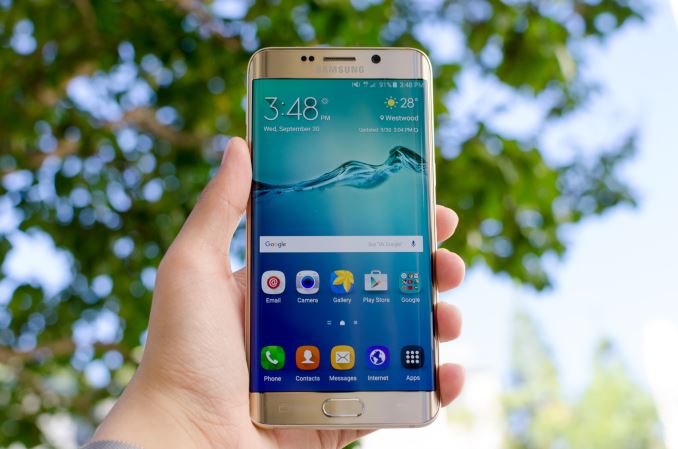
The Galaxy Note line has long been one of Samsung’s greatest assets in the mobile market. While other Android OEMs have made phablets before, Samsung was pretty much the first OEM to ship a high-end device in this segment. Although other Android OEMs have made phablets in the time since, Samsung continues to have a strong hold on this market.
For Samsung, unlike previous iterations of the Note family, the Galaxy Note5/S6 edge+ represents a significant change in design compared to previous generations, integrating many of the design aspects of the Galaxy S6 across the whole family. In many ways, the Galaxy Note5 resembles the Galaxy S6 in a different size. Meanwhile the Note5's companion device, the Galaxy S6 edge+, is effectively a second take on the Galaxy Note5, aiming for a design closer to a large format phone than a phablet as originially envisioned by Samsung. In this case the Galaxy S6 edge+ uses many of the design accents of the Galaxy S6 edge such as the curved display, all the while getting rid of the stylus.
Probably the easiest way to start is by looking at the basic specs. In order to make this easier, the usual spec sheet is below.
Galaxy Note 4 |
Galaxy Note5 |
Galaxy S6 edge+ |
|
| SoC | Qualcomm Snapdragon 805 4xKrait 450 @ 2.7 GHz |
Samsung LSI Exynos 7420 4xA57 @ 2.1GHz 4xA53 @ 1.5GHz |
|
| GPU | Adreno 420 @ 600 MHz | Mali T760MP8 @ 772MHz | |
| RAM | 3GB LPDDR3 | 4GB LPDDR4 | |
| NAND | 32/64GB eMMC | 32/64/128GB UFS 2.0 | |
| Display | 5.7-inch 2560x1440 SAMOLED | 5.7-inch 2560x1440 SAMOLED | 5.7-inch 2560x1440 SAMOLED Dual edge display |
| Network | 2G / 3G / 4G UE Category 6 LTE |
2G / 3G / 4G UE Category 6/9 LTE |
|
| Dimensions | 153.5 x 78.6 x 8.3 mm 176 grams |
153.2 x 76.1 x 7.6 mm 171 grams |
154.4 x 75.8 x 6.9 mm 153 grams |
| Camera | 16MP rear camera, 1.12 µm pixels, 1/2.6" CMOS size, F/2.2 OIS 5MP F/1.9 FFC |
16MP rear camera, 1.12µm pixels, 1/2.6" CMOS size F/1.9, OIS 5MP F/1.9 FFC |
|
| Battery | 3220 mAh (12.397 Wh) Removable |
3000 mAh (11.55 Wh) Non-removable |
|
| OS | Android 4.4 with TouchWiz (At launch) | Android 5.1 with TouchWiz (At launch) | |
| Connectivity | 2x2 802.11a/b/g/n/ac + BT 4.1, USB2.0, GPS/GNSS, NFC | 2x2 802.11a/b/g/n/ac + BT 4.2, USB2.0, GPS/GNSS, NFC | |
| SIM Size | MicroSIM | NanoSIM | |
The Galaxy Note5/S6 edge+ and Galaxy S6 are definitely different in size - coming in at 5.1" versus 5.7" - but there’s otherwise a great deal of similarity this time around. The Galaxy Note5 shares a number of major components with the Galaxy S6, so the big differences between the two lines this generation will primarily be due to the S-Pen and larger size, along with an extra gigabyte of RAM. However, there are still some notable differences that are worth going over, as Samsung has been able to integrate a few months of lessons learned from the Galaxy S6 into the Galaxy Note5.
Design
The first, and easiest place to start is the design of this phone. If you’re familiar with the Galaxy S6, the Galaxy Note5/S6 edge+ is pretty much identical from a functional perspective. The front face of the phone has the same earpiece, home button, front-facing camera, and various sensors. Flanking the home button will be the two capacitive buttons, which are multitasking and back from left to right. The usual Samsung logo is on top, where the display driver for the display is. The bezel retains the same texture that it does from the Galaxy S6, which causes some interesting reflection effects, especially in the sun. The display also has noticeably thinner side bezels than what we saw on the Galaxy S6 or Galaxy Note 4, which is visually quite impressive but in the absence of palm rejection is pretty close to the limit of minimum bezel size.
Along the side of the phone, the buttons, headphone jack, USB port, and speaker are all placed in the same places as the Galaxy S6, which should help if anyone is transitioning to the Galaxy Note5/S6 edge+ from the Galaxy S6. This means that the USB port is centered on the bottom of the phone, with the 3.5mm headset jack on the left side, and the speaker on the right. The volume buttons are also on the left side and are still as clicky and impressive as they were with the Galaxy S6, with no creep or mush and a clean break when the switch triggers. The power button is similar in feel and placed on the right side of the phone, high enough that you won’t accidentally activate the button when you’re picking up the phone.
The top of the phone has the SIM slot for both variants this time around unlike the Galaxy S6, which had the SIM slot in a different position depending upon which variant you got. Unlike the Galaxy S6 or Galaxy Note 4, neither variant has a port for an IR LED/receiver for remote functionality. The Galaxy Note5 also adds a port for the stylus next to the speaker.
Depending upon what phone you get, the major difference can end up being the shape of the back cover. While the Galaxy Note and Galaxy S6 both have glass for their back cover, the Galaxy Note5 has a 3D curved glass back cover much like the Xiaomi Mi Note line. This really improves the in-hand feel compared to the Galaxy S6, which felt a bit blocky. The Galaxy S6 edge+ retains the same flat back cover from the Galaxy S6, but feels a bit easier to grip than the Galaxy S6 edge which had an incredibly thin metal rail to hold on to. Both phablets will be fingerprint magnets on the back cover, but due to the use of glass it’s pretty easy to wipe off fingerprints unlike glossy plastic.
Relative to the Galaxy Note 4, the changes are definitely notable. The metal frame of the Galaxy Note 4 was a relatively angular design, with flat sides and chamfered edges. This design made the phablet feel much bigger relative to something like the Note5 or S6 edge+, thanks in part to Samsung further reducing their device thickness with this latest iteration. The back cover of the Note 4 is faux-leather plastic that peels off much like the Galaxy S2's back cover, with a removable battery and microSD slot. The display has the same buttons, but the bezel had a striped design for unknown reasons. Some people might prefer the design of the Note 4, but I suspect most people are going to prefer the design of the Galaxy Note5.
Overall, in the hand I’d still prefer the Galaxy Note5 to the Galaxy S6 edge+, but pretty much either phone has acceptable industrial and material design. I still wish Samsung would work on cleaning up the front of the phone to be a bit more cohesive, but for 2015 the design of the Galaxy Note5 and Galaxy S6 edge+ is actually quite good. Samsung has sought to distance itself from their reputation of Hyperglaze, and with this phone it’s pretty fair to say that they’ve achieved just that. Both phablets have no real ergonomic issues and are generally well-designed, although aesthetically there are some symmetry issues.


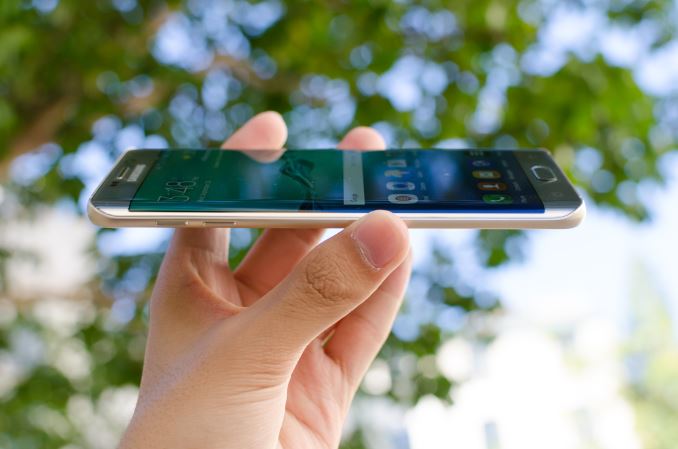
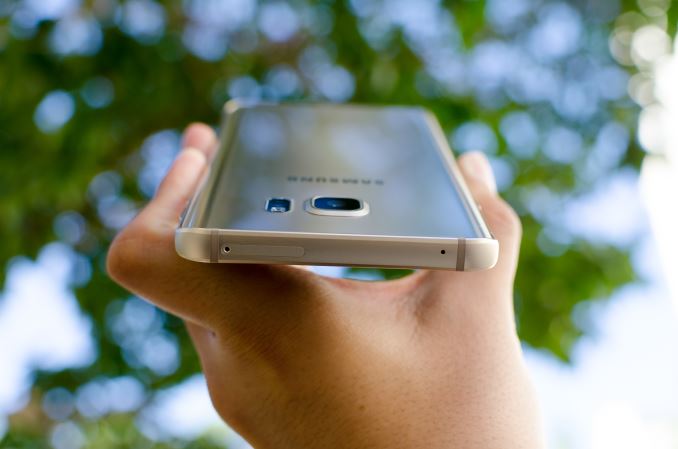
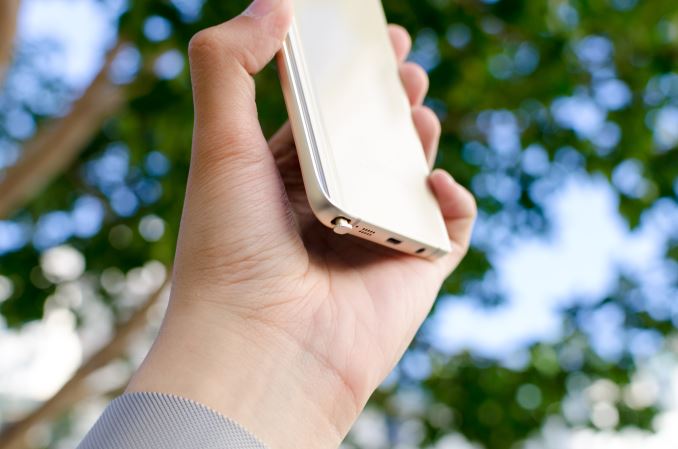
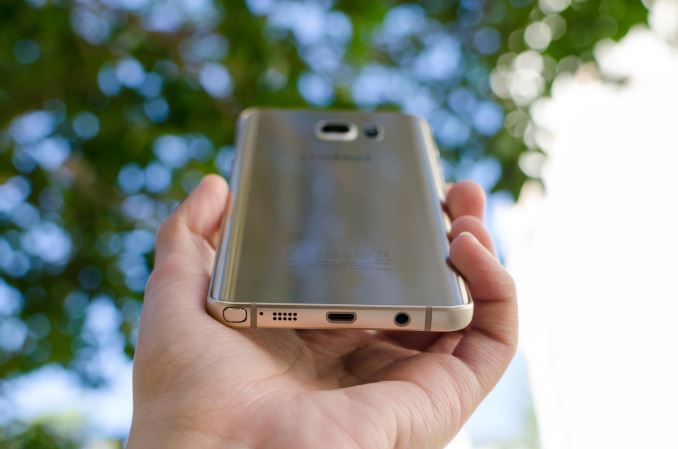








225 Comments
View All Comments
The0ne - Friday, October 2, 2015 - link
WTF, so you want him to voice on something that doesn't exist then? That's just stupid. I bet you use this argument all the time to feel good about yourself. lol. Be easier if you just tell him to not bother in your little fight at all. Makes much more sense.Sttm - Friday, October 2, 2015 - link
Go cry about your real world problems and leave the comments sections of a tech site to us! I'm sure there is a starving kid somewhere that can use your tiny violin services.The0ne - Friday, October 2, 2015 - link
He's not crying, he's laughing at you and the other people bitching about the two companies RATHER than enjoying the devices. You totally misunderstood and misinterpreted his comment. Tech sites needs smart people, please just leave. Take your fanboy arguments elsewhere.And thanks for sharing something a little about your selfish self, all from your stupidity.
melgross - Saturday, October 3, 2015 - link
Oh, shut up!kspirit - Saturday, October 3, 2015 - link
No. >:(generalako - Saturday, October 3, 2015 - link
A more recognized source is the industry standard DisplayMate. Take a look at their tests of the newest Samsung flagships. Ever since the S5, they have been leading in the mark, and ever since the Note 4, their displays have been "considerably better" than the best LCD display (iPhone 6) out there, on virtually every category (contrasts, black levels, efficiency, color accuracy, brigthness, performance in bright lights, viewing angles, sharpness, etc.)http://www.displaymate.com/Galaxy_Note5_ShootOut_1...
Anandtech's test is hard to take seriously when they can't even rate the true peak brigthness of the Samsung phones. They don't even mention that they have left it out of their test! When put on auto brigthness, the Note 4, S6 and Note 5 all get far higher brightness than on manual. The Note 5 can reach 861 cd/m2. That's 50% more than Anandtech claim.
Take a look at DisplayMate's review. They give a proper analysis of the display, which contradicts the Anandtech review on so many areas it's funny.
Peichen - Monday, October 5, 2015 - link
DisplayMate is a Samsung marketing partner. I wouldn't trust it consider them never mention the lackluster AMOLED sub pixel arrangement.MattL - Saturday, October 10, 2015 - link
What the hell are you talking about... first of all read the DisplayMate Samsung review again and search for "Diamond" where they outline the Diamond sub-pixel arrangement. They also have a completely separate article detailing this arrangement (including a zoomed in picture):http://www.displaymate.com/Diamond_29.html
Also in the review in their spec lists they list the sub-pixel count so you can fully compare resolution and sub-pixel counts... hell for their distance in which 20/20 vision can be resolved by the human eye they include stats for the different subpixel counts (which are different per color based on the Diamond arrangement).
How you missed all that I have no clue other than you didn't bother to actually read it.
Also on your first point, Displaymate has been a leader in screen calibration for a long time now... this is their specialty and not the speciality of Anandtech, hence why people take them far more seriously on that topic... it's also why it's a bit surprising Anandtech keeps coming up with different (and less detailed) results, especially when Anandtech doesn't include important values and analysis)... You should really know what you're talking about before you make such a bold response.
Also Displaymate rates the iPhone screens *very* well, just not as a good as Samsung for the past couple generations. You do realize of course that Apple sources their screen manufacturing from a variety of companies... including Samsung, so it makes complete sense that Samsung is doing better when they finally decided to put the resources into it.
Kamus - Sunday, October 4, 2015 - link
On par? You do realize that a Delta below 3 is very much unnoticeable when it comes to gamut and grayscale calibration right?This means that even the galaxy note 4 display smokes any iPhone display to date, because EVERY LCD that has ever been made has downright comical contrast ratio. And OLED on the other hand has the end game in contrast, as in, its perfect.
The only reason this isn't more obvious is because most of the content viewed in smartphones is bright and viewed in very bright environments. Which sort of gives LCDs a free pass since its contrast ratio deficit isn't as obvious as in those situations.
You should know that videophilies spend thousands of dollars on displays that offer even slightly better contrast ratios. And here we have a situation where we go from terrible contrast, to perfect. Watch any sort of dark content on both displays at the same time in a light controled environment and you'll immediately see how these Samsung displays are simply in a whole different league.
Then there's is also the fact that the color gamut is also much wider on OLED, so if the day ever came that we finally decide to stop using the obsolete sRGB standard, OLED would also have an advantage there. (Somethg that had been ironically seen as a disadvantage before they started shiphing phones with color profiles, because the gamut is so wide it results in over saturated colors if a profile isn't is used for sRGB)
I also have to question the brightness results that anandtech got from their unit. Displaymate stated that this is the brightest smartphone display they have ever tested, they get over 800 Nits on their unit. Making it by far the best display you can use under the sun.
To meet it seems obvious that LCD has been surprised in most meaningful metrics, and its only going to get worse for LCD as OLED continues to evolve. LCD has never been good enough, but as it matured it got to a point where it became really good in a lot of ways compared to CRTs (never in contrast or switching times)
TL;DR: these Samsung displays are the benchmark every other display has to be compared to.
thedons1983 - Sunday, October 18, 2015 - link
Yeah, but it's made by Apple, and is pretty much exclusively sold, therefore, to sheep, whom generally have no idea what they are talking about. I'd rather not have a smartphone at all, than one of those ugly ass iphones. But then, that's probably because I actually have taste, and don't just buy whatever hipster rubbish is currently en vogue.